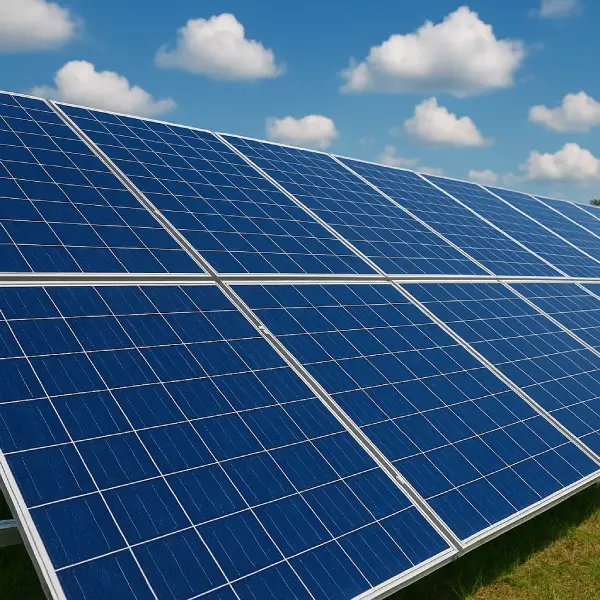


Today, with increasing energy costs and environmental concerns becoming more and more important, solar energy has become a popular alternative energy source. Solar panels are systems that convert sunlight directly into electrical energy and are becoming more efficient and accessible every day. However, there are many different options among solar panel models and choosing the right panel is critical to the efficiency of your system. In this article, we will provide what you need to know about solar panel models and a general perspective on solar panel prices.
Solar panels are generally divided into two main types: monocrystalline and polycrystalline. Each type has certain advantages and areas of use. Apart from this, there are other special types such as thin film solar panels. When choosing a solar panel, it is important to choose the panel that best suits your needs.
1. Monocrystalline Solar Panels
Monocrystalline solar panels are panels produced from a single crystal structure. These types of panels are known for their high efficiency. Although they are usually more expensive, they offer the best performance in terms of efficiency. Monocrystalline panels are usually black in color and can collect sunlight most efficiently at a certain angle.
Advantages:
High efficiency: It varies between 18-22%.
It provides higher energy production in small areas.
It has a long life and usually offers a warranty of over 25 years.
It has a more aesthetically pleasing appearance.
Disadvantages:
It is more expensive than other panels.
It requires advanced technology and has a high production cost.
Application Areas:
Monocrystalline panels are often preferred in homes with limited space, commercial buildings and large solar energy projects.
2. Polycrystalline Solar Panels
Polycrystalline solar panels are panels produced by combining more than one crystal. These panels usually have lower efficiency than monocrystalline panels, but are more affordable. Polycrystalline panels, which are blue in color, can be used in larger areas and attract attention with their affordable prices.
Advantages:
More affordable.
The production process is easier and faster.
Reliable and durable.
Disadvantages:
Lower efficiency: varies between 15-18%.
Requires larger area.
May appear less aesthetically pleasing than monocrystalline panels.
Application Areas:
Polycrystalline panels are suitable for places with large roof areas and users looking for economical solutions.
3. Thin Film Solar Panels
Thin film solar panels are lightweight and flexible panels produced from a thin film layer. These panels are generally used in large surface areas and commercial projects. Thin film panels are cost-effective options, although they have low efficiency.
Advantages:
Lower cost.
They can be applied to various surfaces thanks to their flexible structures.
They can work even in low light conditions.
Disadvantages:
The efficiency rate is quite low: between 10-13%.
Requires larger area than other types.
Their durability and lifespan may be shorter.
Application Areas:
Thin film solar panels are preferred in projects that can be applied in larger areas and on different surfaces.
4. Hybrid Panels (Bifacial Panels)
Hybrid or bifacial panels are panels that produce energy on both sides. They produce more energy by ensuring that sunlight is absorbed not only from the front surface but also from the back surface. Although these panels are more efficient, they are usually more expensive.
Advantages:
Increases efficiency by producing energy with two surfaces.
Provides high efficiency.
Can be used in different application areas.
Disadvantages:
High cost.
Has more complex assembly requirements.
Application Areas:
Hybrid panels are used in projects that seek high efficiency and have areas that can receive sunlight from every angle.
Solar panel prices vary depending on the type, capacity, efficiency and brand of the panel. Monocrystalline panels are generally more expensive than polycrystalline panels because they offer higher efficiency. Thin-film panels come at lower prices, but they are also less efficient.
Other factors that affect solar panel prices:
Panel Capacity: Larger capacity panels are generally more expensive.
Manufacturer and Brand: Panels from well-known brands may be sold at higher prices.
System Installation Cost: The cost of installing a solar panel can make a certain difference regardless of the panel price.
In general, prices for monocrystalline solar panels are related to the cost of higher efficiency panels. Polycrystalline panels are generally more affordable. Thin-film panels are more affordable and are generally a good alternative for users looking for economical solutions. These prices may increase with installation costs and other additional components.
When choosing a solar panel, you need to pay attention to some important criteria to make the right decision:
Efficiency: High-efficiency panels produce more energy in smaller spaces. This is an important factor if you have limited space.
Price: The cost of a solar panel is an important factor in saving money in the long run. Economical options may be more affordable at the beginning.
Warranty and Durability: Long-lasting and durable panels require less maintenance in the long run.
Installation Area: If you have small space, it would be better to choose more efficient systems such as monocrystalline panels.
Solar energy systems provide an environmentally friendly lifestyle by providing sustainable energy use. There are many options among solar panel models, each of which caters to different needs. Models such as monocrystalline, polycrystalline, thin-film and hybrid panels each come with different efficiencies and prices. Choosing the most suitable panel for your needs will allow you to maximize energy savings.